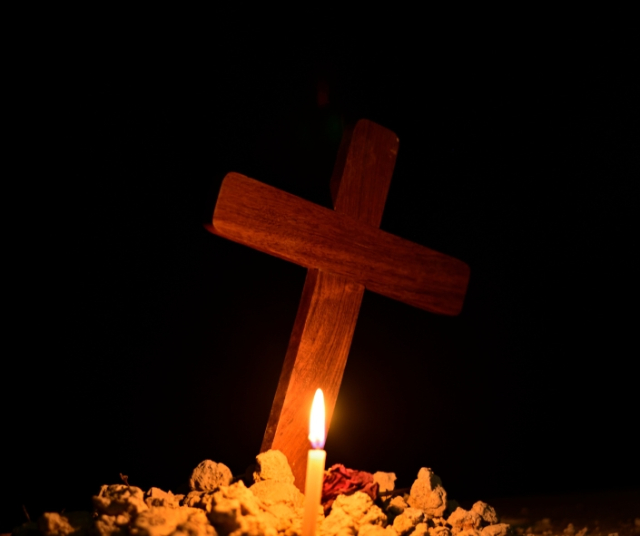In the vast cultural mosaic of Peru, the May Cross Festival emerges as a unique and vibrant celebration that fuses elements of popular religiosity, indigenous tradition and colonial heritage. This festival, which takes place throughout the country, constitutes a palpable testimony of the cultural wealth that characterizes this South American nation.
Historical Origins: Fusion of Beliefs and Traditions
The May Cross Festival in Peru has its roots deeply rooted in a process of cultural and religious fusion that was unleashed during the Spanish conquest in the 16th century. In this crucial historical period, European colonizers, eager to spread the Catholic faith among indigenous populations, encountered resistance and an ingrained connection of these communities to their own spiritual practices and ancestral deities.
It was in this context that Spanish missionaries adopted an ingenious strategy to facilitate the conversion of indigenous communities. Instead of imposing their beliefs abruptly, they sought points of convergence between local traditions and Christian doctrine. In the case of the May Cross Festival, this fusion occurred by linking the veneration of the cross, a Christian symbol, with pre-existing celebrations dedicated to Pachamama, the mother earth worshiped by indigenous cultures.
For indigenous communities, Pachamama represented fertility, prosperity and a spiritual connection with nature. By introducing the cross as a symbolic element, the missionaries managed to establish a bridge between the Christian religion and local beliefs. The cross, symbolizing the crucifixion of Jesus Christ, was adopted as a way to integrate Christianity into existing ritual practices, thus creating a new expression of faith that would resonate throughout the centuries.
This fusion of beliefs and traditions not only allowed the coexistence of Christian and indigenous religious elements, but also gave rise to a unique holiday that encapsulates the cultural diversity of Peru.
Regional Events: Diversity in Celebration
The May Cross Festival is not homogeneous throughout the country; On the contrary, it presents a diversity of regional manifestations that reflect the cultural and geographical particularities of each place. From the majestic celebrations in the cities to the more intimate ones in rural areas, the festival adapts to the different realities of the Peruvian geography.
In the city of Cusco, for example, the Plaza de Armas is filled with color and music as residents participate in processions that run through the cobblestone streets. Crosses adorned with flowers and bright fabrics become the epicenter of devotion, and participants dress in traditional costumes that highlight the cultural fusion characteristic of the region.
In contrast, in the most remote Andean communities, the May Cross Festival takes on a more intimate dimension. Celebrations focus on rituals that honor the land and seek divine protection for crops. The residents participate in ancestral dances and offer food to Pachamama, thanking her for the fertility of the land and requesting her benevolence for future harvests.
Rituals and Traditions: Beyond the Surface
The richness of the May Cross Festival is not limited to the pomp of public celebrations; It also resides in the rituals and traditions that are carried out in the private and community spheres. One of the most notable elements of these festivities is the "crossing of the crosses", a ritual that involves the installation of decorated crosses in homes and fields to promote divine protection.
Peruvian families actively participate in the preparation of these crosses, using flowers, ribbons and symbolic elements that represent both the Christian faith and the connection to the land. The process of making the crosses becomes a collective activity that strengthens community ties and transmits the importance of the festival from generation to generation.
Another significant aspect of the celebration is the traditional music that accompanies the processions and rituals. Native instruments such as the zampoña and the charango are interspersed with Christian melodies, creating a unique soundtrack that encapsulates the cultural diversity of Peru.
Contemporary Challenges: Between Tradition and Modernity
Despite the deep-rooted cultural and spiritual importance of the May Cross Festival, it is not exempt from the contemporary challenges facing Peruvian society. Globalization, climate change and internal migration have impacted the ways in which this ancient holiday is celebrated.
The influence of globalization is manifested in the incorporation of modern elements in celebrations. In some cities, traditional parades are accompanied by more contemporary events, such as concerts and fairs, sparking debate about preserving cultural authenticity in the face of outside influence.
Climate change has also affected agricultural practices associated with the holiday. Communities that depend on the land for their subsistence are affected by extreme weather events that threaten the stability of crops. This has led to a reinterpretation of rituals, incorporating specific requests for environmental protection and agricultural sustainability.
Additionally, internal migration has dispersed communities, bringing with it the traditions of the May Cross Festival to new locations. This phenomenon raises the question of how to preserve and transmit cultural practices in a changing context, where communities are no longer geographically concentrated.
